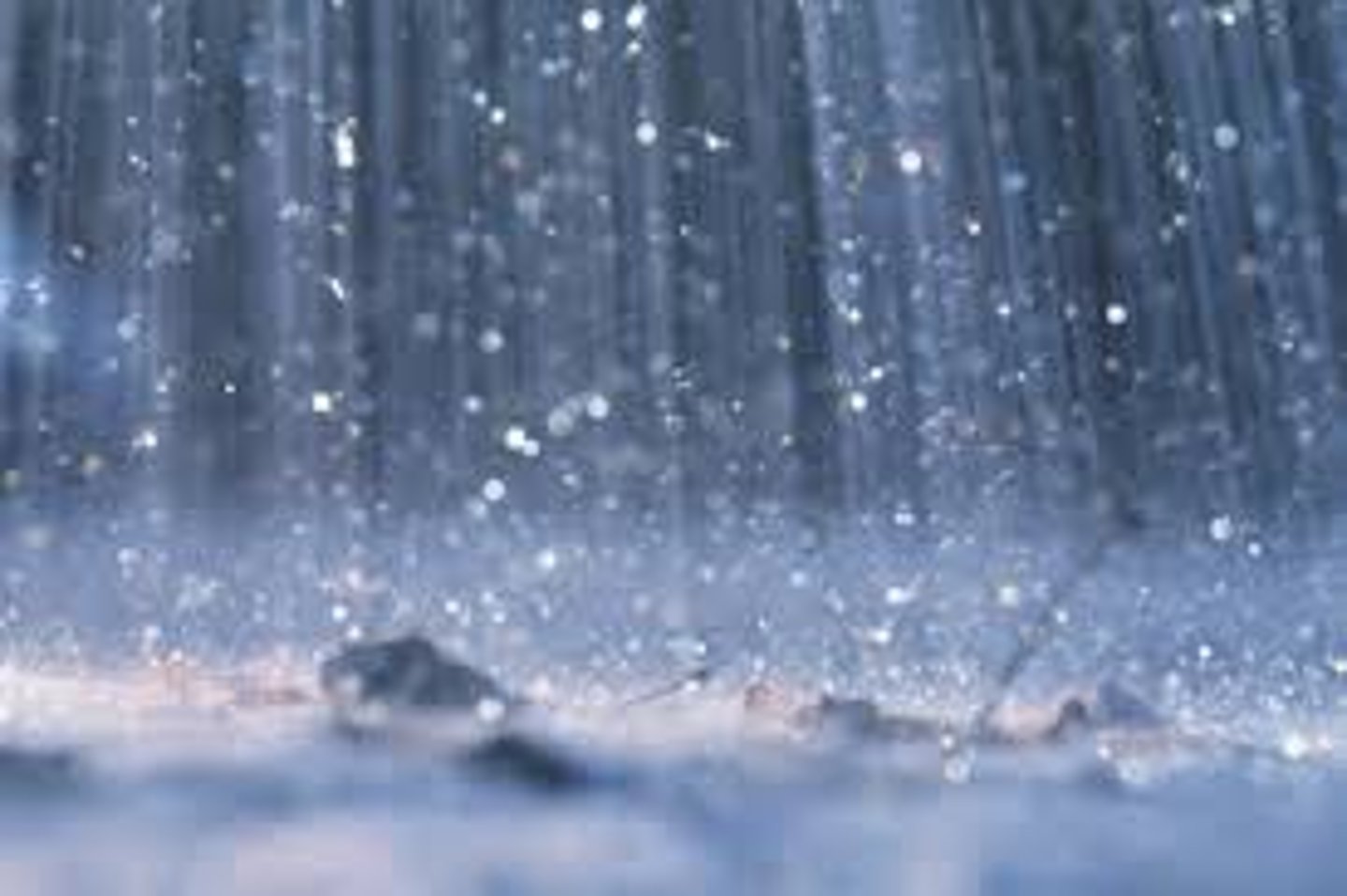Water Cycle Review
1/15
There's no tags or description
Looks like no tags are added yet.
Name | Mastery | Learn | Test | Matching | Spaced |
|---|
No study sessions yet.
16 Terms
water cycle
the continuous process by which water moves from Earth's surface to the atmosphere and back
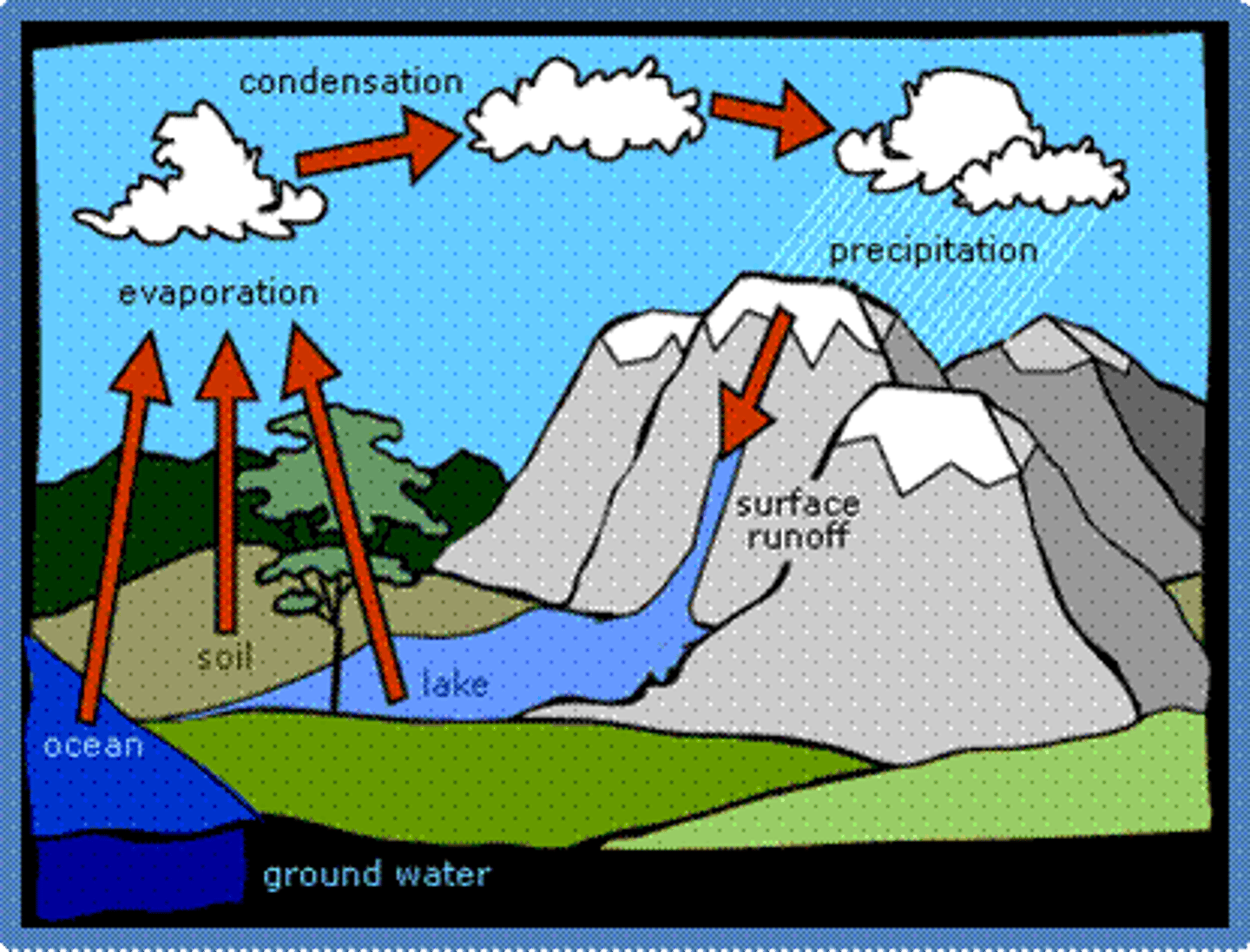
evaporation
a process at which molecules at the surface of a liquid absorb enough energy to change to the gaseous state
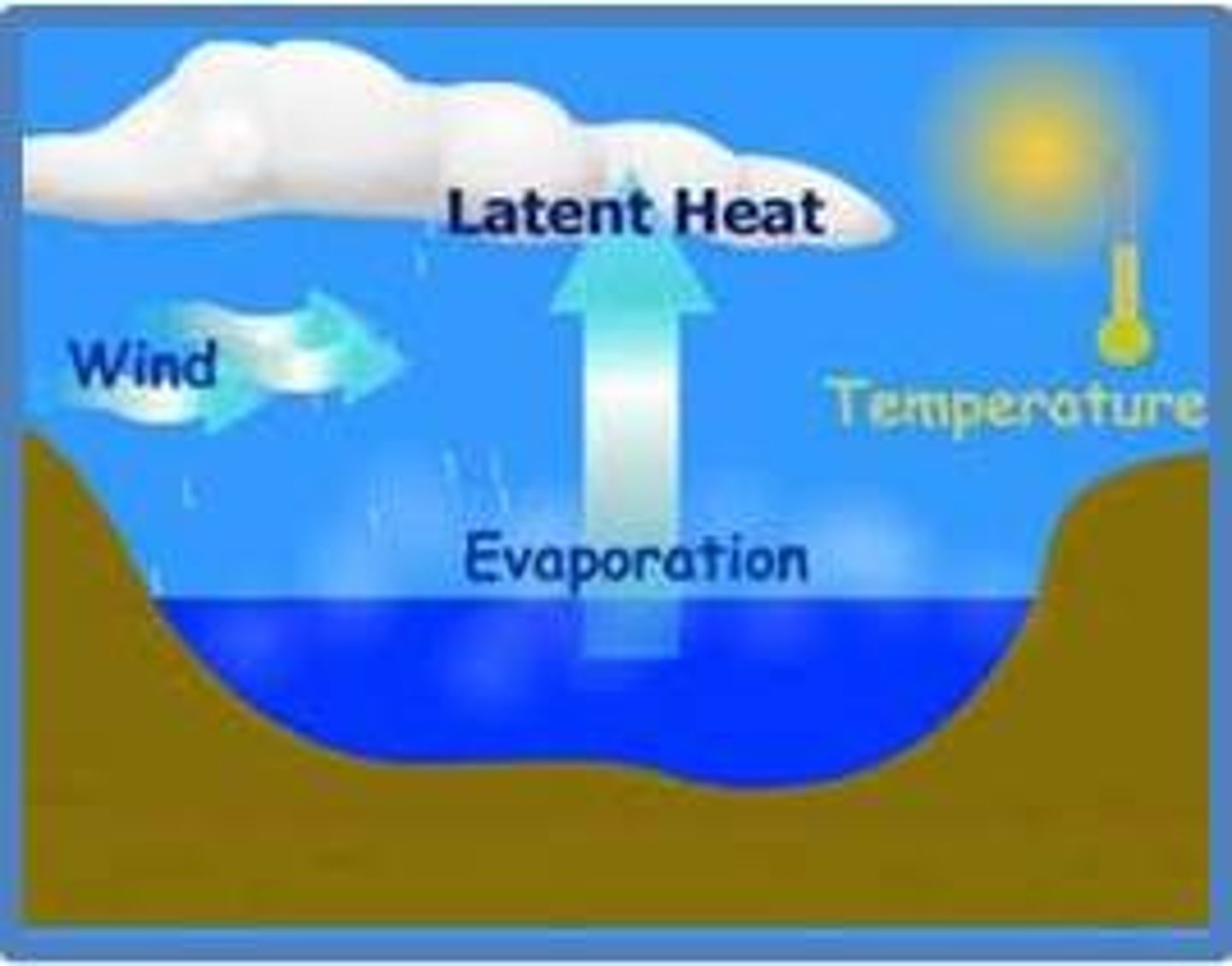
condensation
water vapor cools and becomes a liquid
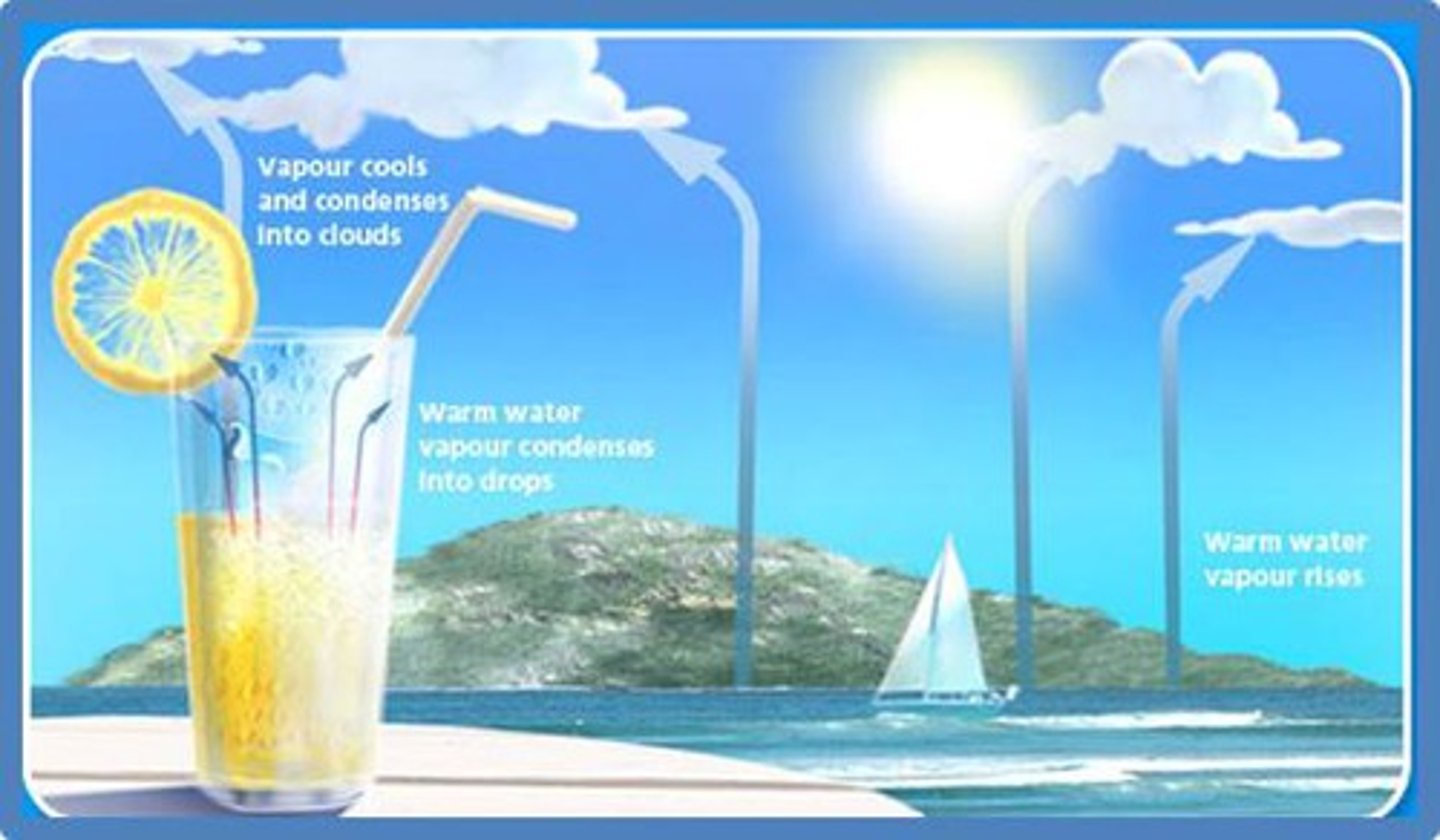
precipitation
when water in the form of ice, rain, sleet, hail, or snow, falls to Earth
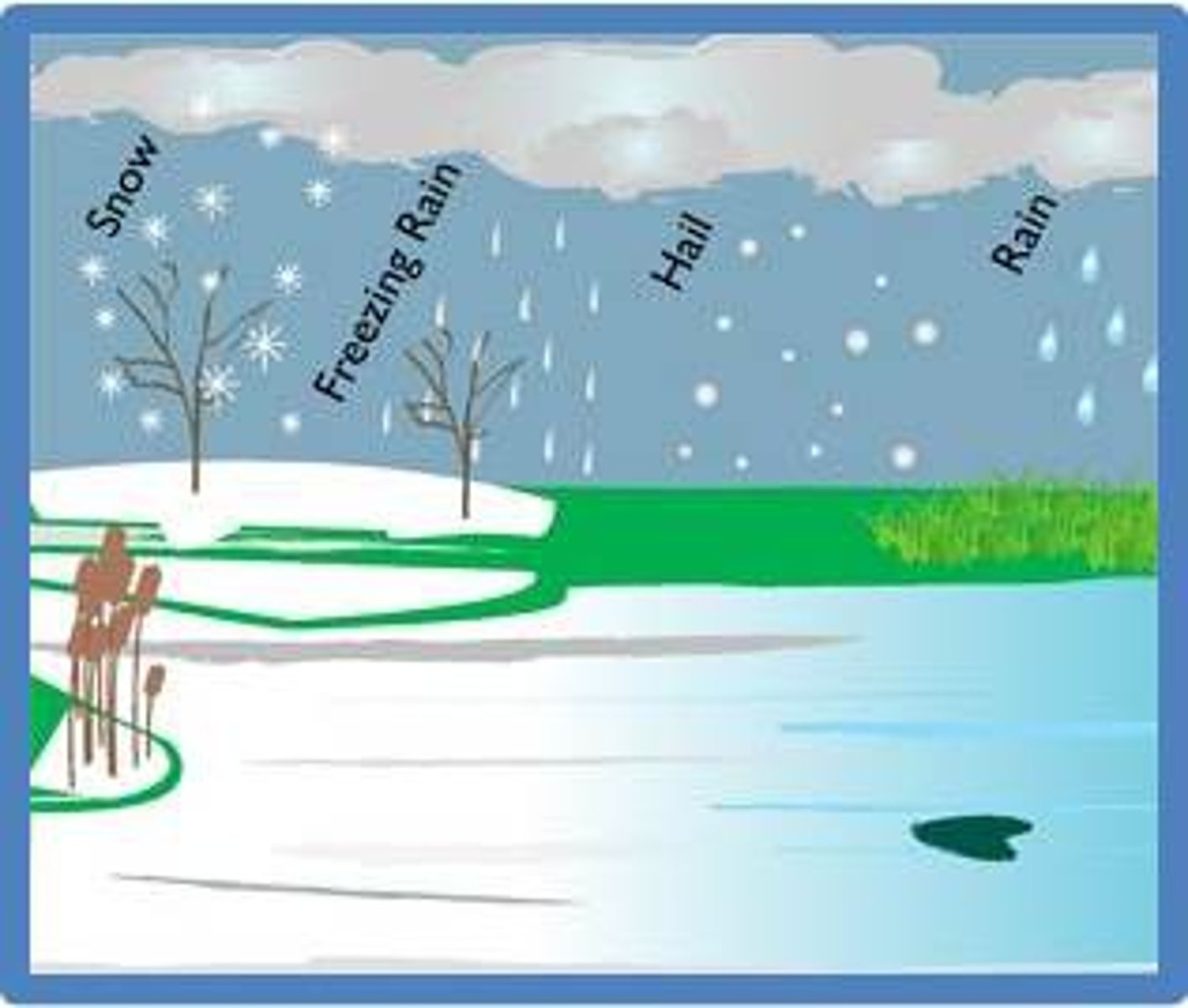
transpiration
the water that plants give off as part of their respiratory process (they "breathe" in carbon dioxide and "breathe" out oxygen - in this process, they also make water)
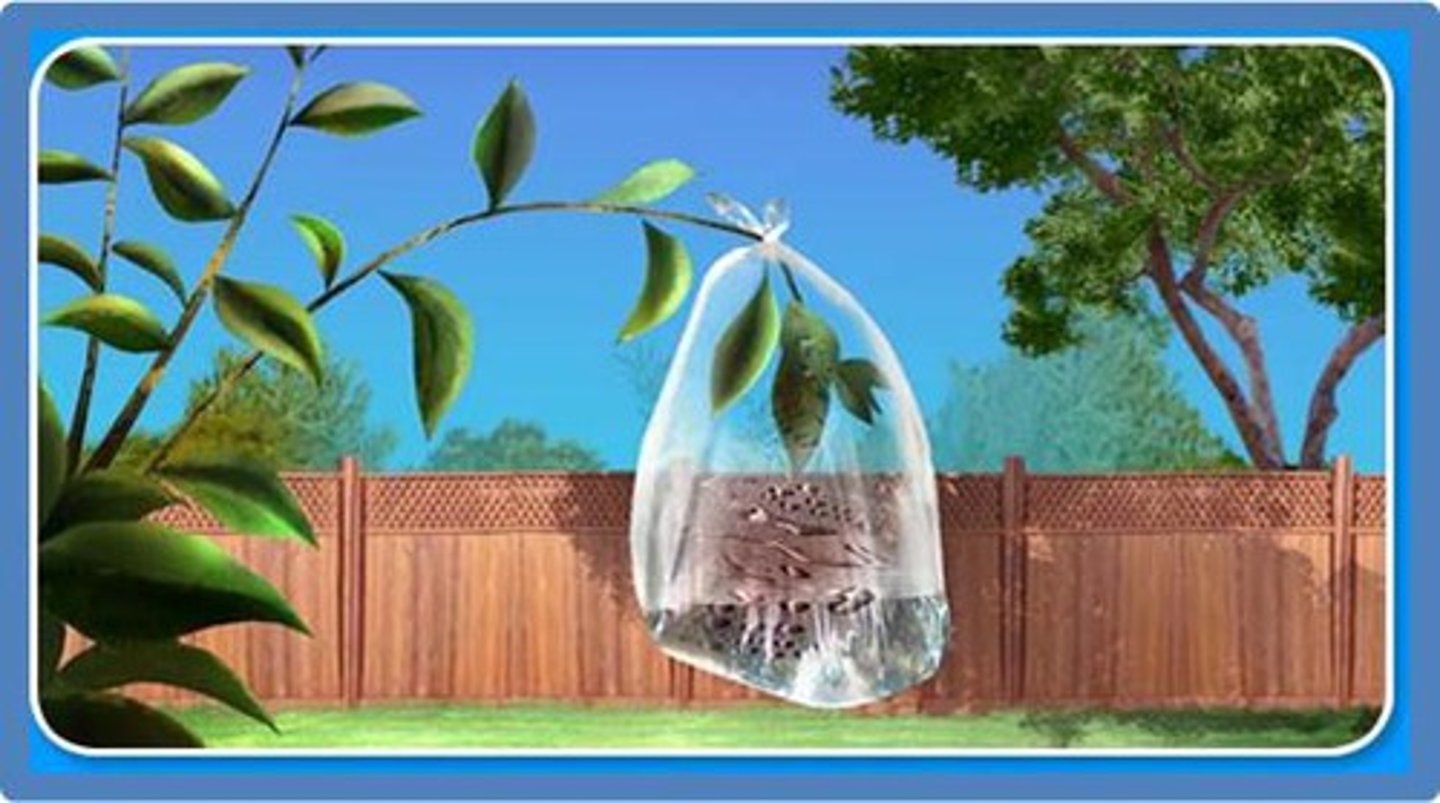
runoff
when precipitation hits the ground, it is either absorbed, or it flows over the surface of the earth
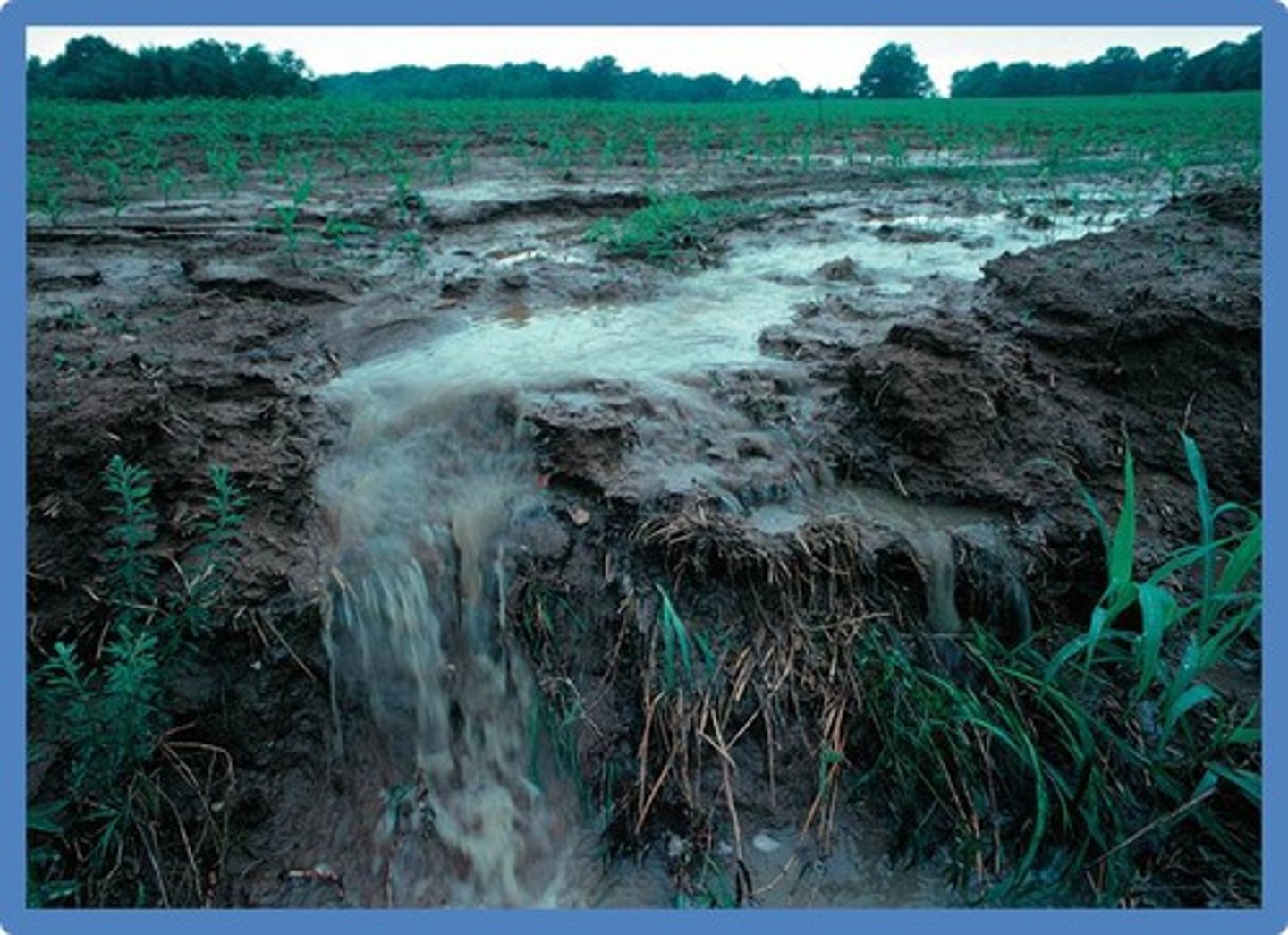
water vapor
water in its gas form
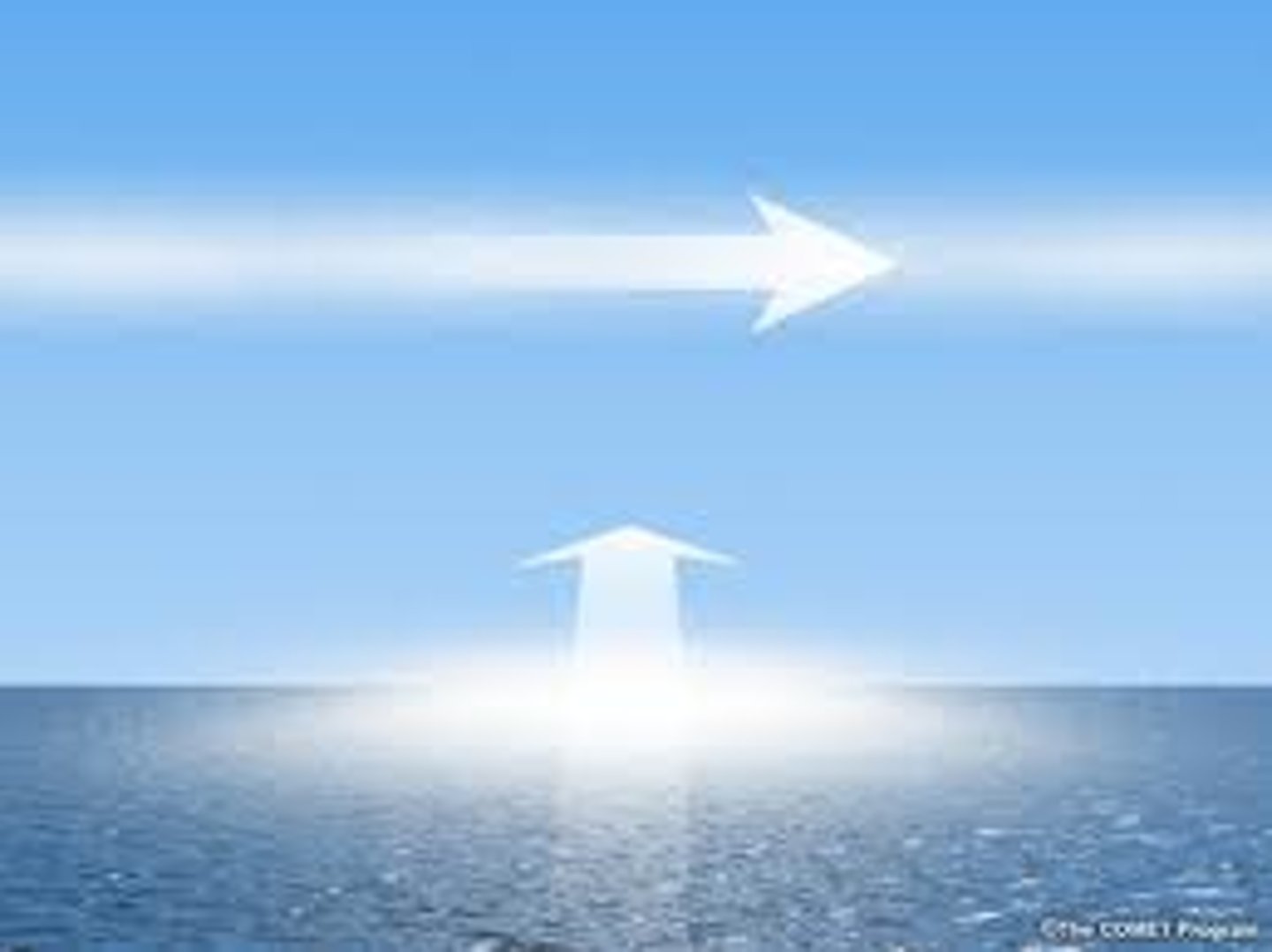
groundwater
water that is in the ground
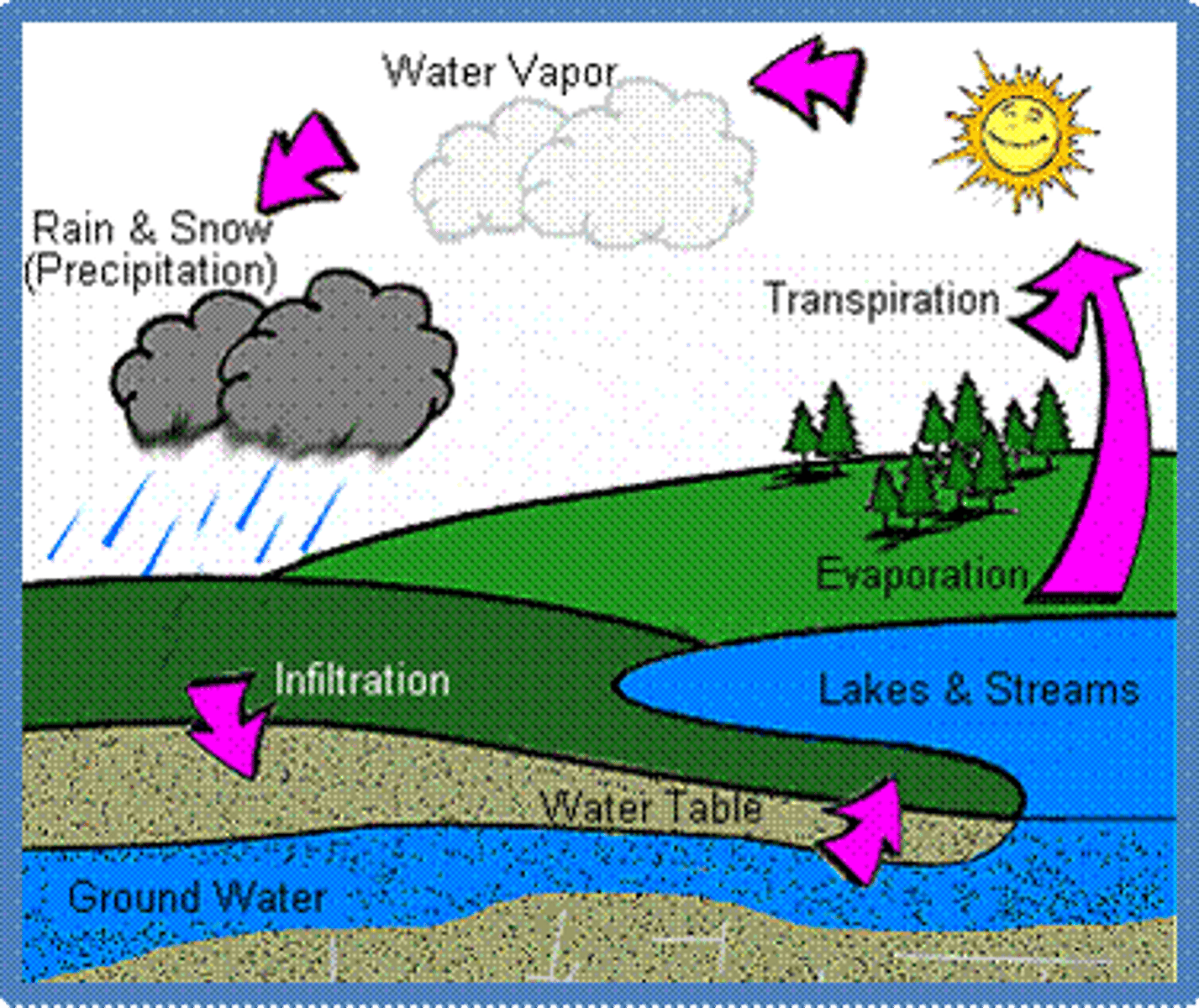
solid
a state of matter that has a definite shape and a definite volume; when water is in this state, it is because its temperature is below the freezing point and the water molecules are close together

liquid
a state of matter that has a definite volume but no definite shape; when water is in this state, is above the freezing point and the water molecules are not quite as close together as in the solid state
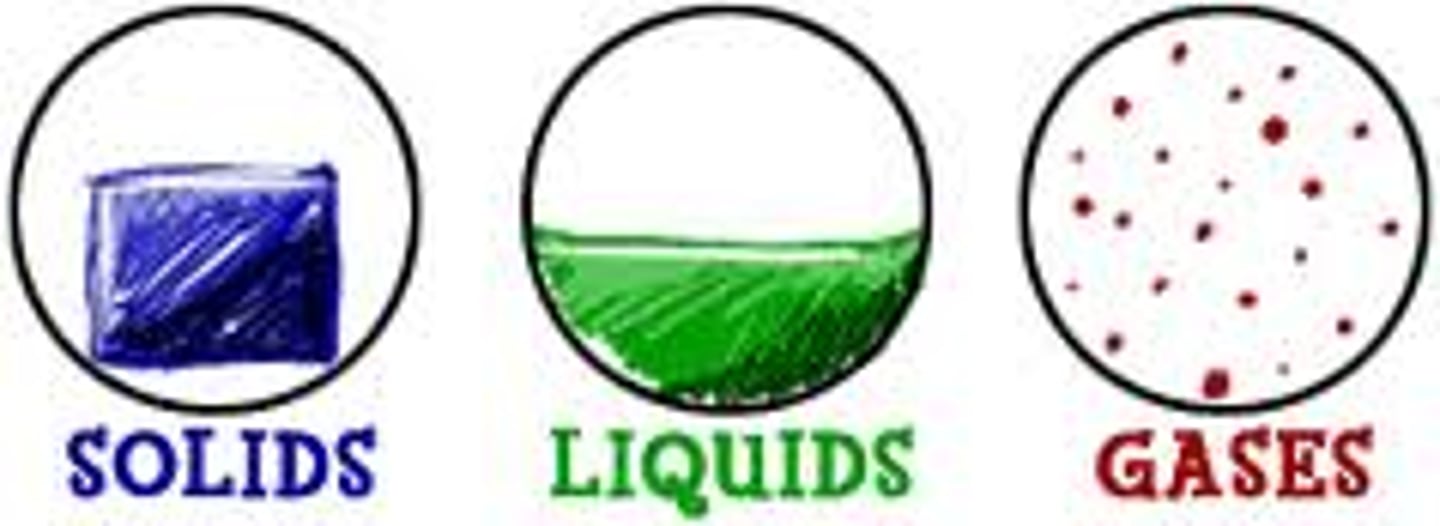
gas
a state of matter with no definite shape or volume; when water is in this state, it is called "water vapor," and you cannot see it; when water is in its gaseous state, the temperatures are warm; water molecules are farther apart than when in liquid or solid form
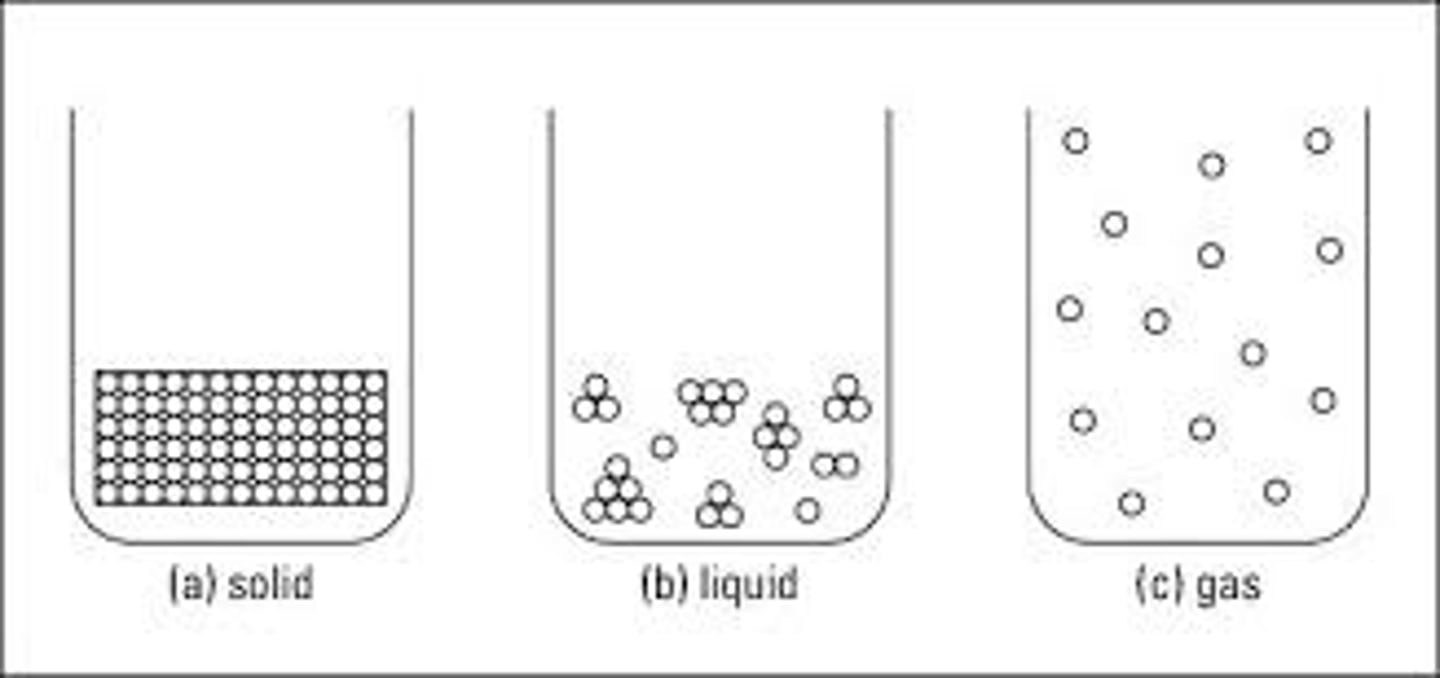
States of Matter
the physical forms of matter, which include solid, liquid, and gas
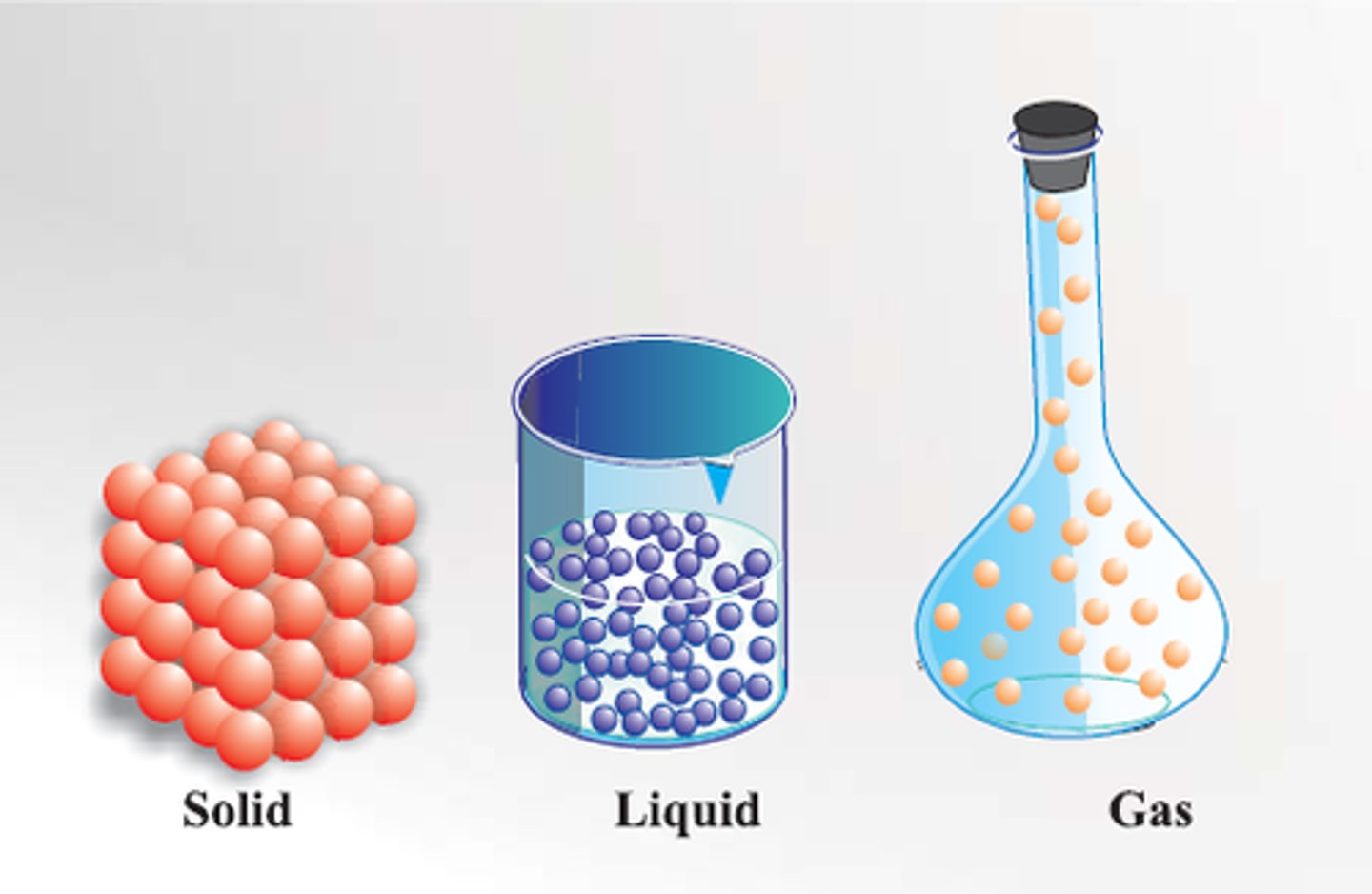
hail
ice pellets larger than 5 millimeters in diameter formed in cumulonimbus clouds by strong updrafts of wind
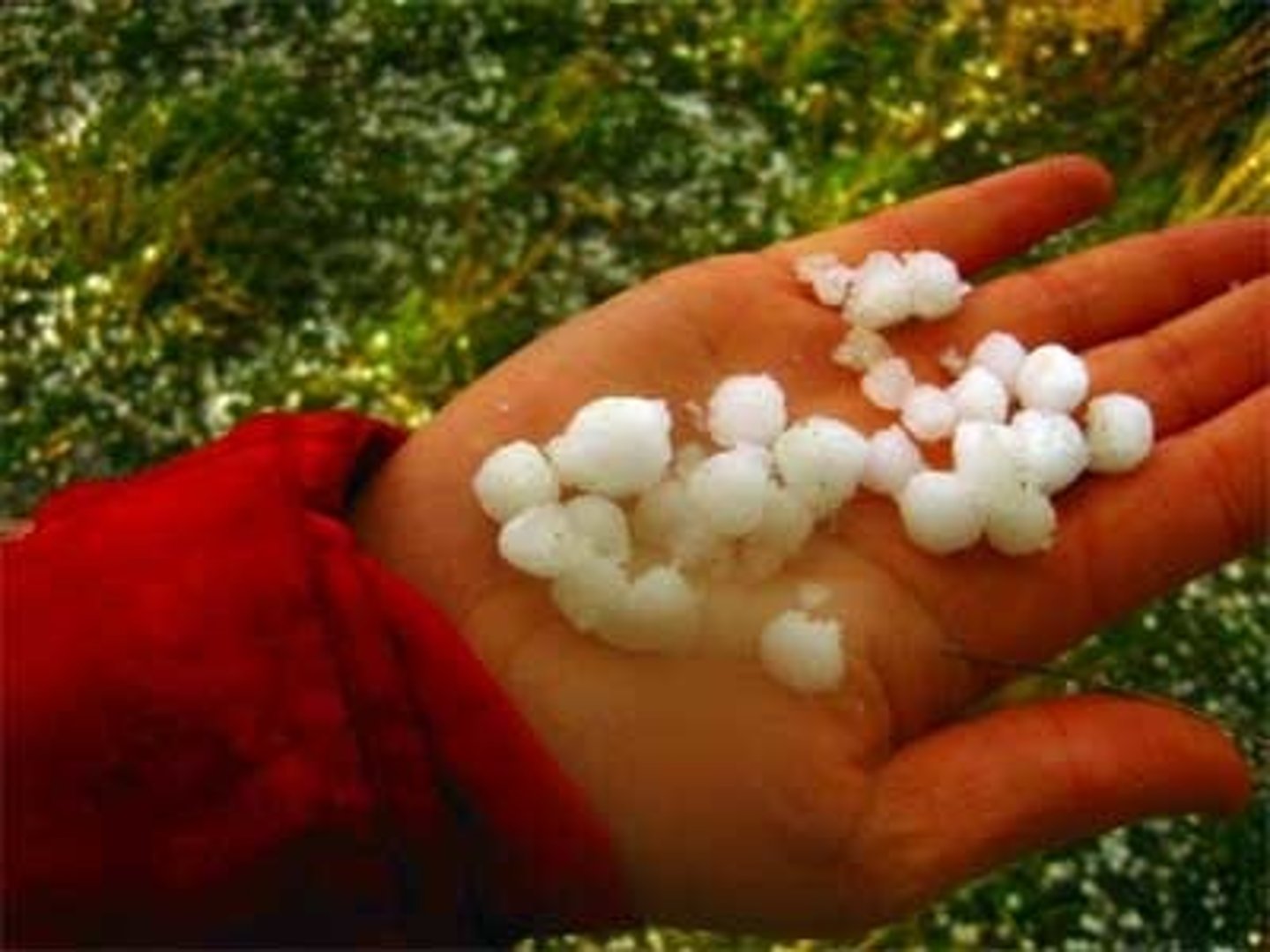
sleet
clear ice pellets precipitation, forms when rain falls through layer of freezing air
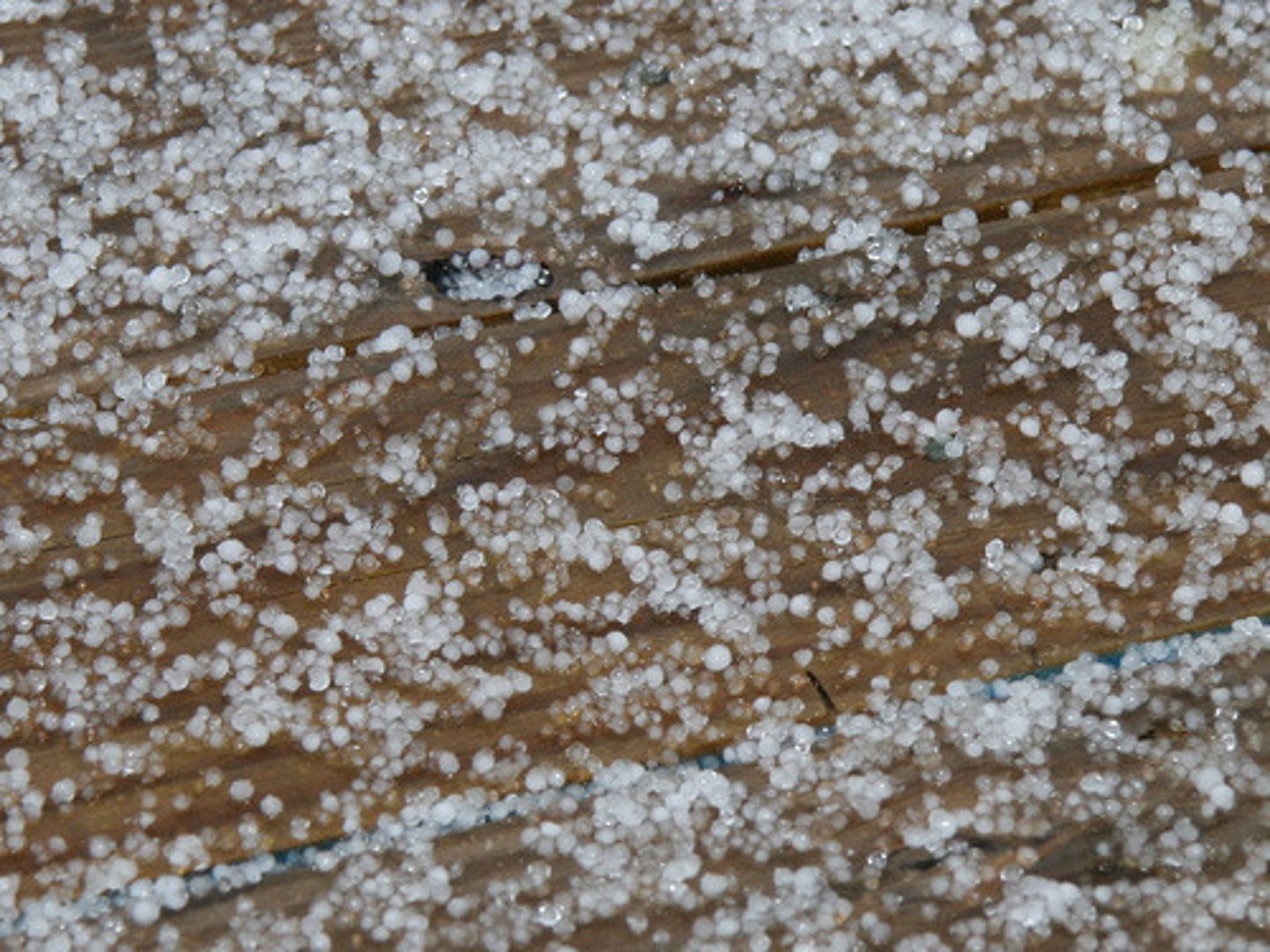
snow
a solid form of precipitation composed of ice crystals in complex hexagonal form
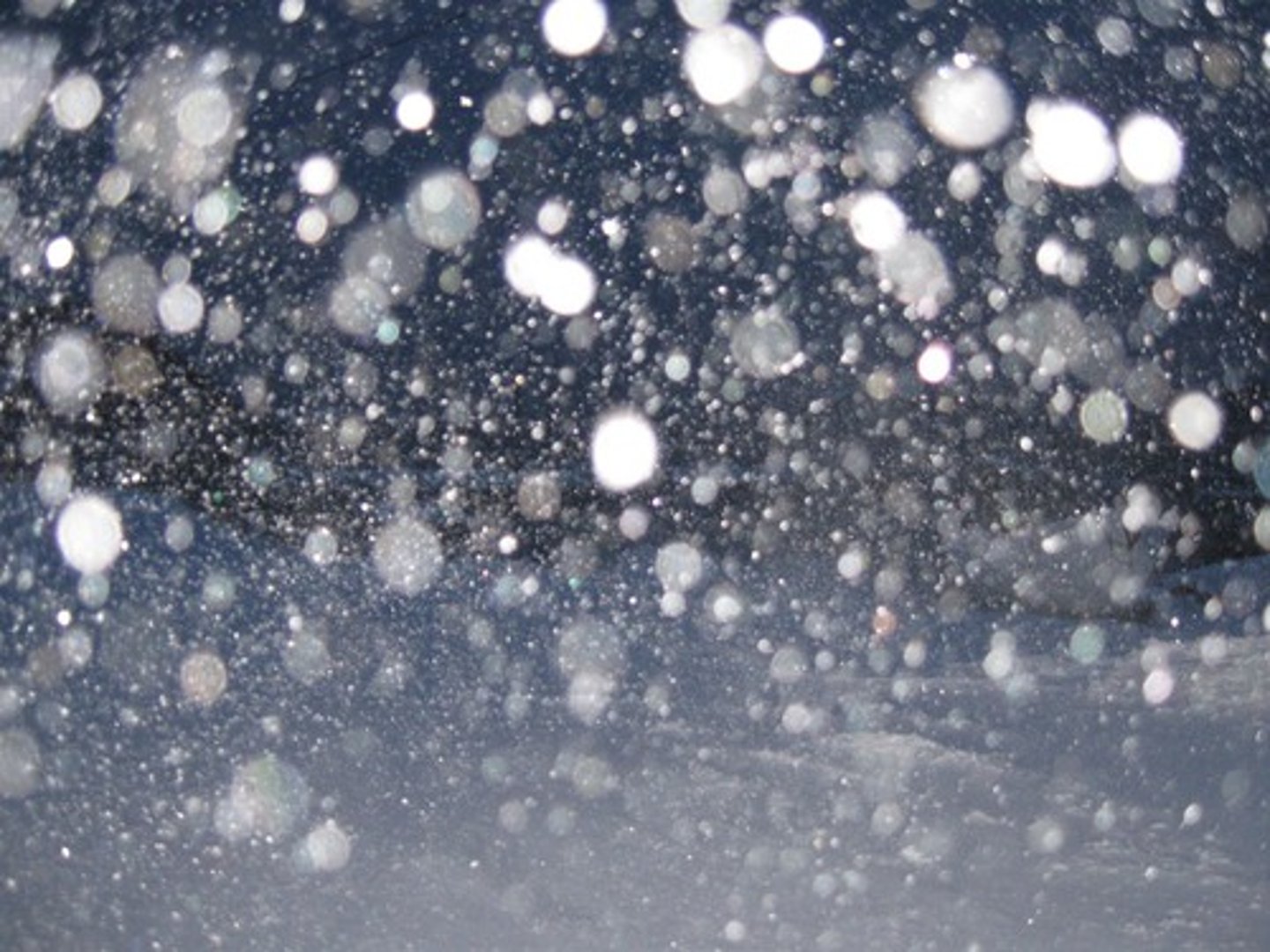
rain
liquid precipitation
